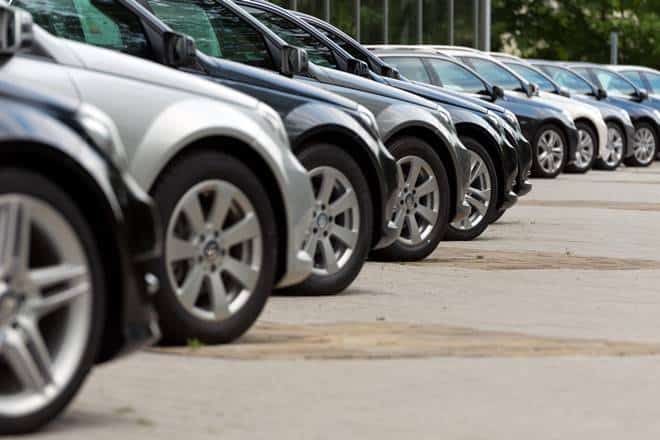
Buying a car over the past year has been a wild experience.
A shortage of semiconductors for vehicles since last year and persistent supply chain issues has severely curtailed the number of new cars available. And even with $5 per gallon for gas (or more), demand for cars is far greater than the supply, sending prices soaring.
“The chip shortage is still kind of the central piece that’s driving supply down for new vehicles,” Nick Woolard, senior director of business analytics at TrueCar, an auto pricing and information website, told Fortune. “As the supply has gone down, we’ve seen prices go up for new vehicles, and that trend is continuing.”
The cost of a new car has now risen 12.6% since last year, hitting a national average of $47,148 in May.
“There’s just so much pent-up demand and the supply crunch kind of keeps moving forward,” Woolard said.
Surging car prices have become a key contributor to the country’s rising inflation. The latest Consumer Price Index, which measures inflation in the U.S., found that prices for all goods have increased an average of 8.6% over the past year, and new vehicles and used cars were a big contributor to the rise.
According to the latest CPI, new vehicle prices rose 1% in May compared to April, while used car prices rose 1.8% over the same period.
Warped demand
The high prices are starting to push some buyers out of the market.
“Since [car] prices are so high, and because everything around us is so expensive, namely gas prices and cost of living, it feels like there are people that are just going to sit out of the car market at this point in time. They’re not getting the exact vehicle they want, because inventory is so limited,” Jessica Caldwell, executive director of insights at Edmunds, a car value appraisal and information site, told Fortune.
“We’re starting to definitely see the consumer-side backlash of all of these high prices,” she added.
For months, several major automakers have posted steady declines in U.S. car sales. Ford’s sales in May dropped 4.4% versus last year, while foreign-made cars fared even worse. Hyundai sales fell 30%, Honda sold 57.3% fewer cars, and Mazda reported sales that were 63.7% lower than last year.
While Americans have reduced their spending overall during the past few months due to inflation, when it comes to cars, it all comes down to supply.
“The bigger impact on vehicle prices is not so much inflation as it is scarcity,” Aaron Bragman, Detroit bureau chief at online automotive marketplace Cars.com, told Fortune. “There simply aren’t enough vehicles to meet demand and that’s starting to impact sales.”
‘It’s a weird situation’
Prospective car buyers are also postponing buying a car because one major cost-saving measure is no longer such a deal: used cars.
New and used car prices are inextricably linked. A shortage in new vehicle supplies immediately drives up demand for used ones, creating a shortage there too. Prices for used cars were already rising earlier this year, and the market has only become more warped since then.
Used car and truck prices have risen 16% over the past year, and 50% more than before the pandemic. In many cases, a used car is even more expensive than a new one of the same model.
“It’s a weird situation,” Bragman said. “We hear from people who bought a used vehicle three or four years ago and actually sold it for more than they bought it for just last year.”
The distorted market is also changing how many consumers buy cars. During the pandemic, online and at-home car shopping threatened to make dealerships and showrooms obsolete. Now, many car dealerships are suffering from low inventories.
“There’s some evidence saying that vehicles rarely even hit the dealer lots anymore. They’re sold before they even get off the truck,” Bragman said. “It’s not even so much about wanting to get the exact vehicle you want anymore, it’s more about just wanting to get a vehicle period.”
This story was originally featured on Fortune.com